----------------
The Countess Du Barry, Muse of the Parisian Watchmaking and Jewelry House A. Bourdin
With a theatricality that is both lively and contained, this radiant Salon Clock, whose elegant and happy composition should be immediately noted, illustrates the preeminence in its time of the Parisian Watchmaking and Jewelry House A. Bourdin (1833-1873). "Exclusively appreciated by the most elite clientele", this "out of line" establishment acquired from the 1840s to the laudatory votes of the press as well as to the "favors of the beautiful world" was to see its "masterpieces sought after for their impeccable finish, their richness by the great families where they remain to testify to the good taste of our time". The timepiece that we present cannot contradict this opinion expressed following the Universal Exhibition of 1855.
Raised on an anterior base with leafy corolla motifs, the architectural body of the clock has a large rectangular base with curvilinear projections topped with a flower bud. Braided with heart-shaped stripes, the latter comes to life in the lower part within a Rocaille cartouche with the mischievous mask of a Satyr from which, punctuated with florets, serpentine stalks of Volubilis unfurl; twisted, their ramifications encircle the white enamelled dial of the clock set with pearls, forming a plume.
Set in frames decorated with frieze dentils, delightful Sèvres porcelain plaques probably due to the brush of Miss Le Guay, an artist-painter attached to the so-called Manufacture and whose collaboration Maison Bourdin had secured, temper with their polychromy, alternately fresh and suave, the robustness of the base, specifying the theme of the timepiece. Surrounded by Celestial Blue verniculated with volutes, gold acanthus crosslets, these are adorned on its sides with smart and coquettish thrown bouquets of spring flowers. As if escaped from the pictorial compositions executed by François Boucher (La Cible d'Amour, 1758), pleasant little tableaux depicting rebellious Cherubs curled up on clouds, enjoying the precision of the stroke of their arrows, illuminate its façade.
Seated cheerfully on consoles with leafy scrolls, wrapped in airy draperies, two childish figures "charming in form and attitude" crown the ample base with its neat decorative design. A palm in the palm of their hand, a flowery sheaf near their heart, these candid toddlers with tender faces become the deferential singers of a female Effigy topping the pendulum bushel on a small die.
Mounted like a cameo in an openwork rocaille cartouche, a polychrome porcelain medallion with a Celestial Blue frame enhanced with palms, fleurons and florets shows the bust portrait of a Lady of Quality of Yesteryear with coquettish finery (dress with ribbons, jewels, plumed headdress). In these fine and cute features, this caressing look and charming smile, we recognize the adored and last Favorite (from 1763 to 1774) of King Louis XV: Countess Jeanne Du Barry (1743-1793). During the year 1768, she declaimed: "Her Majesty always has the same attachment to me: she is charmed". From then on, the mascaron stamped with the playful face of a Satyr - an allusion to carnal pleasures -, the ramifications of Volubilis - associated in the language of flowers with the adage "I would attach myself to you" -, the porcelain tableaux spiritually declining the fleeting sentimental intrigues or contentious love affairs attached to the good-natured reign of Louis XV take on their full meaning within this very interesting timepiece designed and executed under the learned direction of Anathase Bourdin who also grants himself the quality of tactfully reviving the memory of one of the most famous Muses of the 18th century. -------------
"To speak of the Maison Bourdin (1833-1873) is to cite, without doubt, one of the most recommendable establishments for the finish of its products, (..), of which distinguished families could not deprive themselves of owning a model". (La Patrie, August 13, 1852)
Successor to the Watchmaker Souriau (1833), Athanase, Ernest Bourdin (1811-1894) established in the Capital at 10, rue de la Paix was awarded in 1836, for his pieces of "portable watchmaking", the honorary title of "Watchmaker to the King". Having become in their typology of insignia models, his "small travel, office or work clocks" combining mechanical "precision", decorative "charm and luxury" will ensure him the honors of his peers, prestigious clientele (Duke of Némours, Count of Villa-France) and European recognition.
Very "skilled mechanic", this "Ingenious and learned watchmaker" coupled with "a man of perfect taste" "could not stop there". During the years 1840-1848 in his "elegant" store now located at 24, rue de la Paix, he offered "high-luxury precision watches of marvelous taste enriched with enamels, inlaid with precious stones" like the one that the Princess of Polignac would order from him (1844). The press of the time unanimously praised (from 1843) its "assortment of clocks of all styles: "large Renaissance models", "Rocailles clocks with capricious and picturesque groups", "with modern subjects, works of our favorite artists" or even "delicious porcelain clocks, masterpieces of old soft paste", ... - of which A. Bourdin "himself inspired and directed the execution".
Led "by a man of undeniable knowledge and a deep knowledge of everything related to his industry", the Maison Bourdin obtained various awards at the National Exhibitions (1839, 1843, 1844, 1849) and International Exhibitions (London, 1851, Paris, 1855, 1867) including in 1855 a First Class Medal "glorious consecration of the long and incessant work of this eminent manufacturer "recognized as one of the "most distinguished watchmakers, of whom France is honored". Moved to 28, rue de La Paix (1849) then transferred to 5, rue de Castigione (1868), La Maison Bourdin offered until the years 1870-1873, "Luxury Watches, precision, Travel Clocks, Art Clocks of Salon and Boudoir, Clocks in Vieux-Sèvres, Watch Accessories and Objects of Jewelry".
-------------
Materials: Gilded bronze; Sèvres porcelain with polychrome decoration in reserve in frames with a Bleu Celeste background varnished with fine gold; enamel and glass. Gilded stuccoed wood, velvet. Dimensions: H.: 36.5 cm;-L.: 45.5 cm;-Pr.: 14.5 cm
Marks and Signatures: Dial signed: "BOURDIN Hr du Roy/ RUE DE LA PAIX 24 PARIS" Movement stamped on the plate with the Parisian watchmaker's stamp: "BOURDIN/A PARIS" and numbered: "3451".
High quality Parisian work in the Louis XVI style from the first half of the 19th century. Model created by A.E Bourdin, (1811-1894), Jeweler-Watchmaker to the King established in Paris 24 rue de la Paix. Restoration period, Circa 184
Good condition of conservation. Original mercury gilding. Note: Small chip of enamel on the dial at the level of the entry of the winding key.




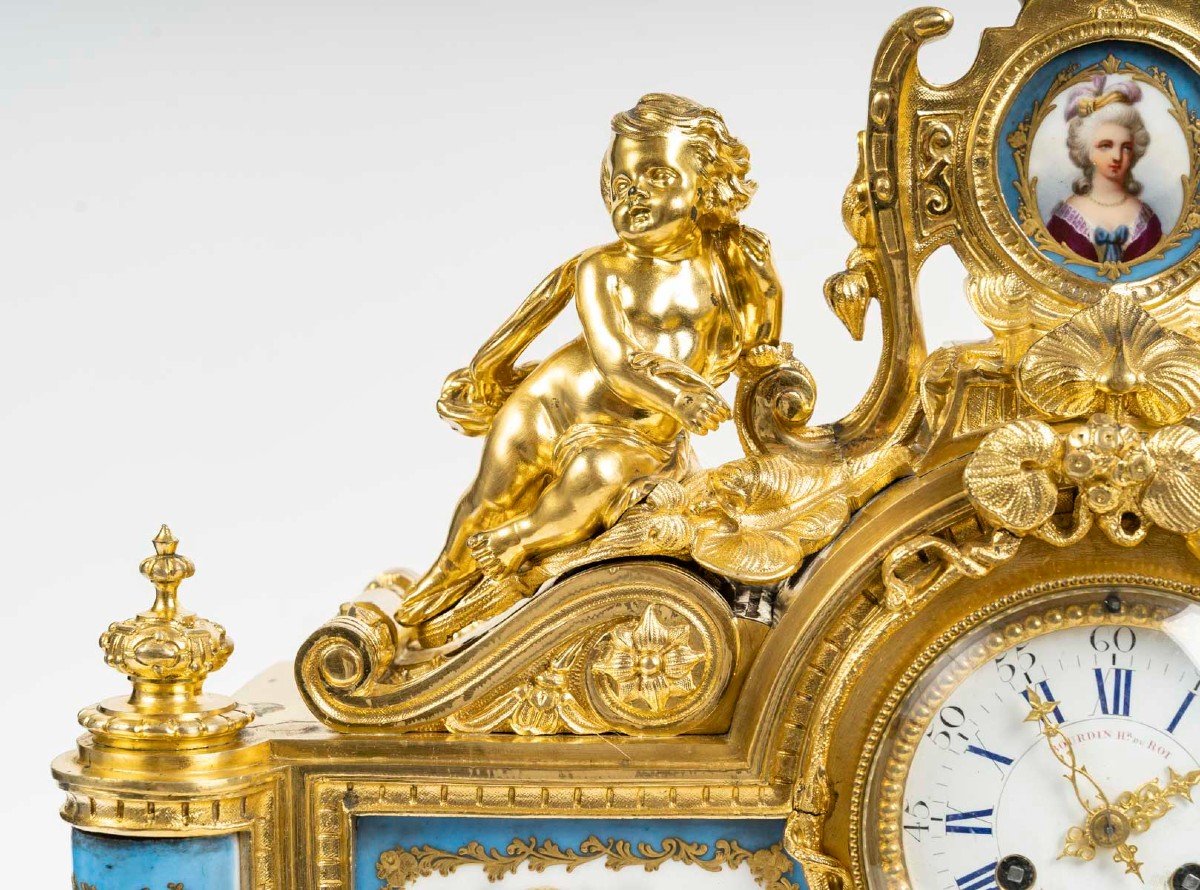






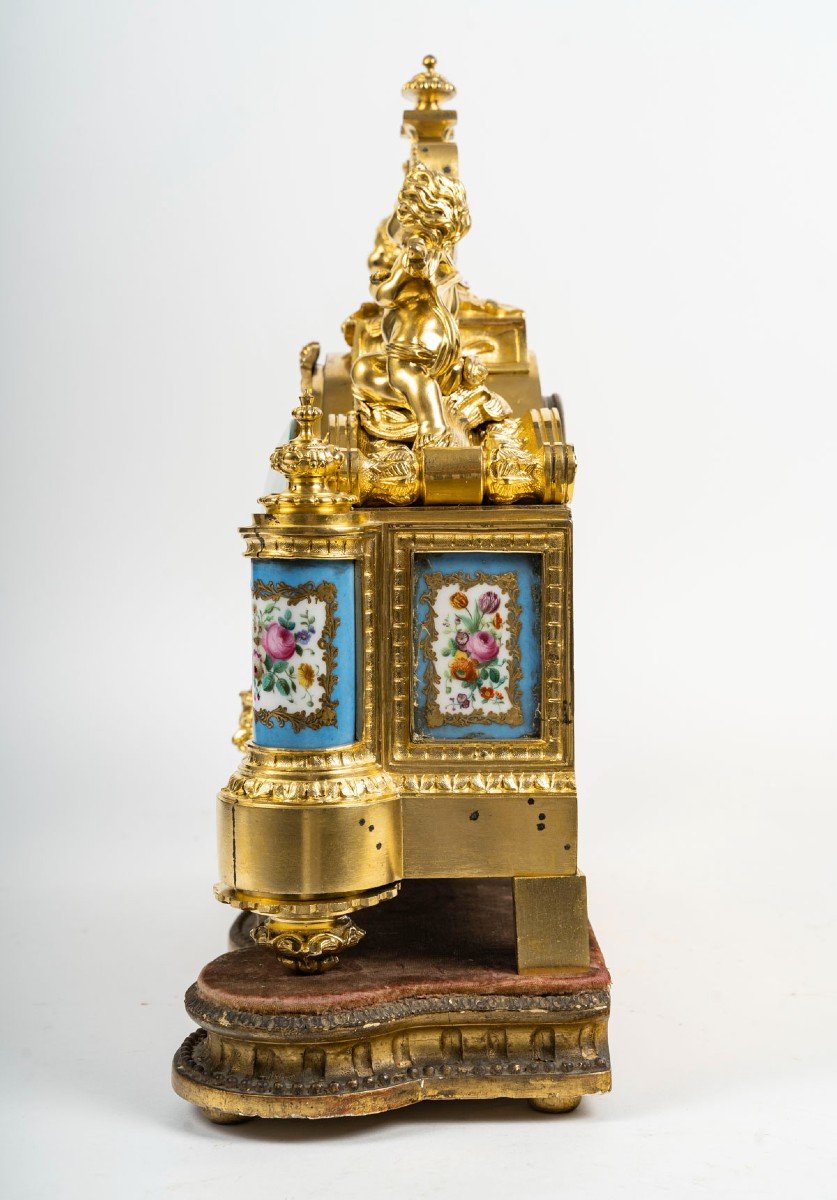
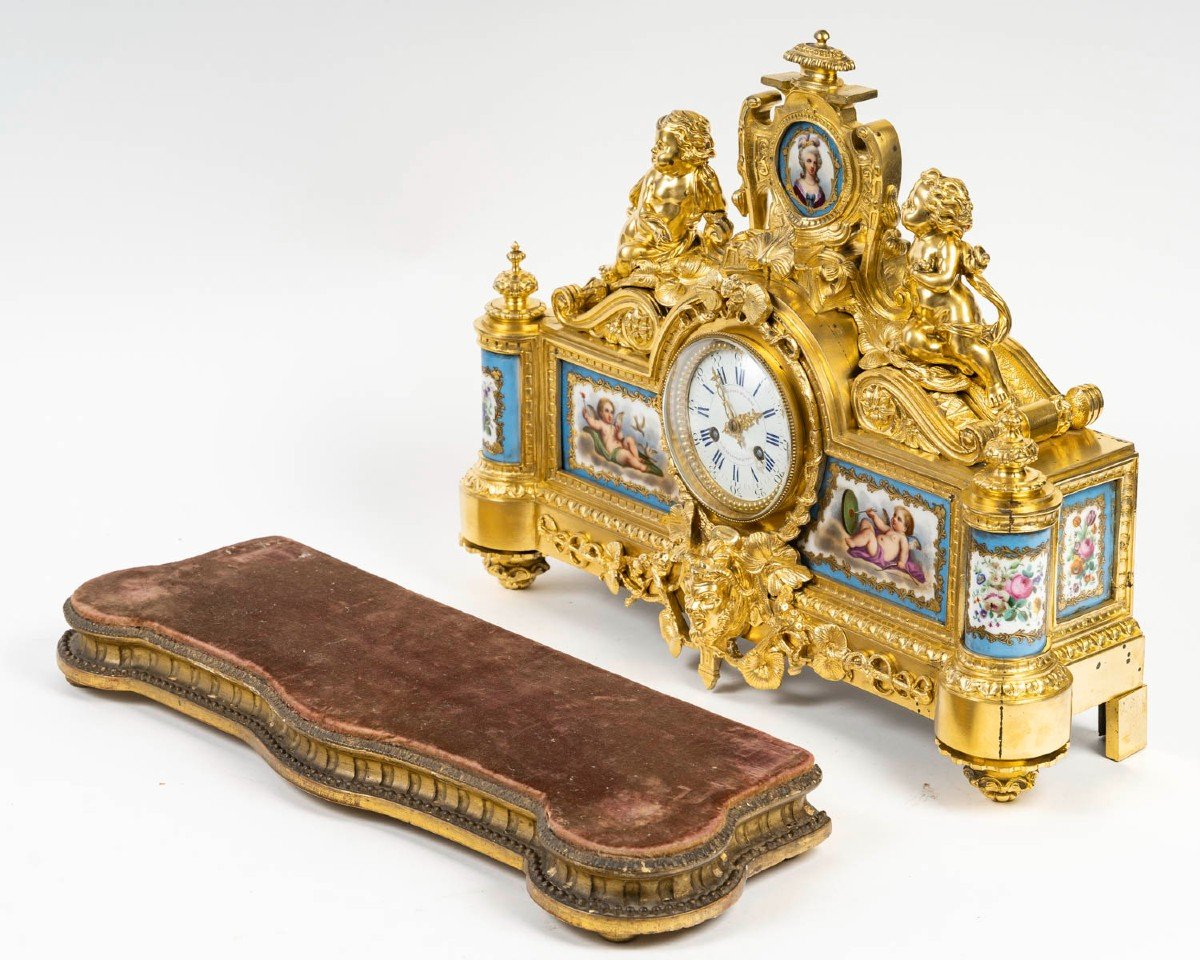
















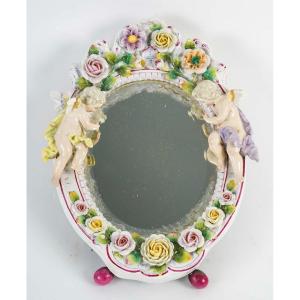




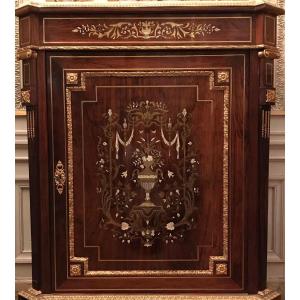
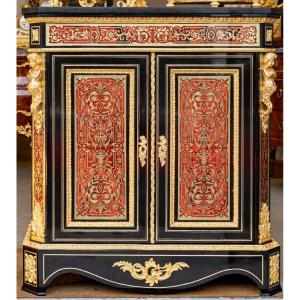

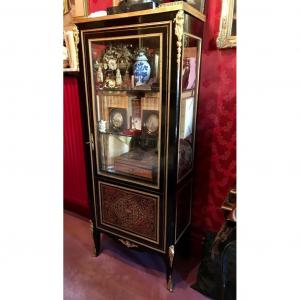
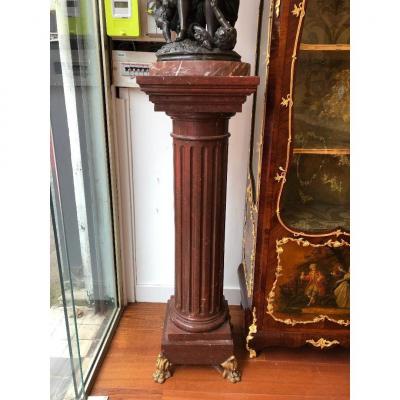





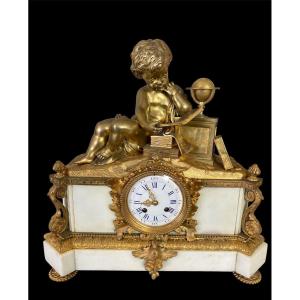



 Le Magazine de PROANTIC
Le Magazine de PROANTIC TRÉSORS Magazine
TRÉSORS Magazine Rivista Artiquariato
Rivista Artiquariato